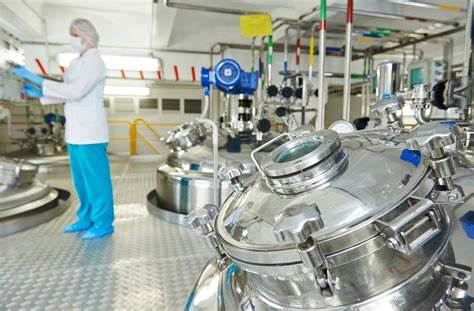

Discussion forum for Pharma Quality events, Regulatory Actions
Warning letters, 483s, Recalls, Import Alerts, Audit observations

Warning letters, 483s, Recalls, Import Alerts, Audit observations





USFDA Warning letter to Mylan in 2020 cited inadequacy of cleaning, cleaning procedures, risk assessment of equipments, bulk storage tanks of recovered solvents and mother liquors to prevent cross contamination, unknown peaks in recovered solvents, inadequacy of CMO and evaluation. The Warning letter to Mylan Laboratories Unit 7 Pashamylaram, India (FEI 3003227156) followed inspection of the unit from 24-28 February 2020.
Failure to have adequate cleaning procedures to prevent contamination or carry-over of a material that would alter the quality of the API.
Inadequate controls and documentation of cleaning, storage, usage of bulk solvent storage tanks used for recovered solvents and mother liquors in various products in a multiproduct facility. Impurity profile of the recovered solvents were not performed. CMO (Contract Manufacturing Organisation of facility) for solvent recovery is not evaluated adequately, impurity profile of recovered solvents was not evaluated. The Firm received from a CMO recovered solvents, stored the solvents in non dedicated tanks and used the same in multiple lots of API; This CMO was on an Import Alert (66-40) for inadequate impurity profile in recovered solvents. Unknown peaks in recovered solvents were not investigated, but used in manufacture of APIs. Assurances that the non-dedicated equipment would not contribute to cross-contamination or carry-over of residual impurities is limited
Cleaning validation and verification program for non-dedicated manufacturing and storage equipment of the Firm are inadequate. Methods were not adequately validated for detecting and quantifying impurities. An inadequate scope of impurity analysis, in combination of non-dedicated equipment, lack of cleaning records, and introduction of elevated unknown impurities, increase the risk potential for API and API intermediate cross-contamination.
Firms response to agency that cleaning validation and verification program was adequate based upon the absence of out-of-specification investigations, lack of complaints, and undetected impurity testing is inadequate. Cross-contamination cannot be assumed to be uniformly distributed. Testing alone is insufficient to mitigate the observed contamination hazards. Also the Firm did not discontinue the CMO cited for recovered solvents.
In response to Warning letter, Firm to :
Firms should have procedure to evaluate and assess what are possible impurities that can be present in recovered solvents and mother liquors (including nitrosamine impurities), qualify recovered solvents, control over usage of bulk storage tanks for recovered solvents (usage, cleaning, cleaning verification, documentation). Firms should establish:
Leave a Comment
You must be logged in to post a comment.